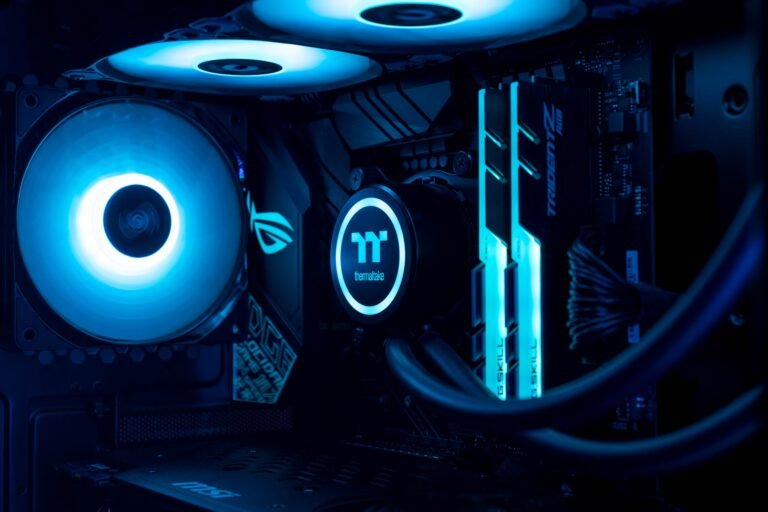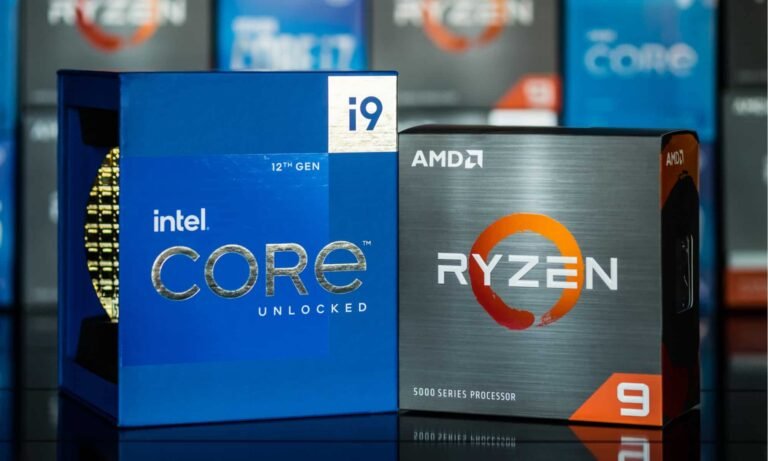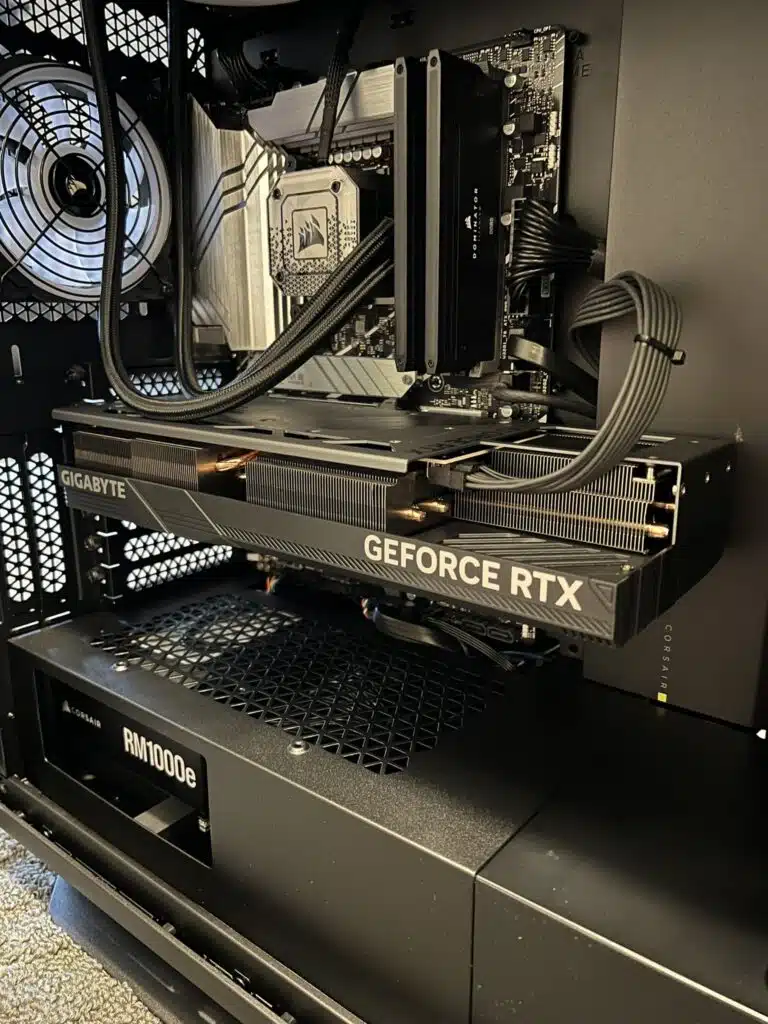CPU Hyper-Threading Technology Explained: Benefits and Limitations
Modern processors are more powerful than ever, thanks to technologies that maximize performance and efficiency. One of the key innovations that has shaped modern CPU design is hyper-threading — a feature developed by Intel to improve parallel task handling. But what exactly is hyper-threading, how does it work, and when does it truly make a difference?
Hyper-threading is a hardware technology that allows a single physical processor core to behave like two logical cores, improving a CPU’s ability to handle multiple tasks simultaneously. By making better use of resources that would otherwise sit idle, it can significantly boost performance in multitasking and multithreaded applications, though its effectiveness depends heavily on the software being used.
This article will break down how hyper-threading works, its tangible benefits, important limitations, and how it fits into the modern computing landscape alongside other technologies like multi-core processing.
How Does CPU Hyper-Threading Work? The Magic Behind the Cores
At its core, hyper-threading is an Intel-branded implementation of Simultaneous Multithreading (SMT). AMD processors use a similar technology, also generally referred to as SMT.

Imagine a coffee shop with one barista (a physical core) who can only make one coffee at a time. Sometimes, the barista has to wait for the espresso machine to finish, leaving them idle. Now, imagine if the barista could start preparing a second customer’s tea while the espresso machine is running. The barista hasn’t gained an extra arm, but is now using their time more efficiently by switching between tasks during natural downtime. This is the essence of hyper-threading.
Technically, a hyper-threaded core has duplicate architectural components, such as register sets, which store the state of a thread. This allows the core to maintain the context of two separate threads simultaneously. However, the core’s execution resources (like arithmetic logic units) are shared. When one thread is stalled—for example, waiting for data to be fetched from memory—the core can immediately switch to executing instructions from the second thread, keeping the execution units busy and reducing idle time.
To the operating system (like Windows or Linux), each physical core with hyper-threading appears as two logical processors. This means a 4-core CPU with hyper-threading will be seen by the OS as having 8 logical cores, allowing it to schedule more tasks to run concurrently.
Key Benefits of CPU Hyper-Threading
The primary advantage of hyper-threading is increased efficiency and performance for certain types of workloads. Here’s how it delivers value:
- Improved Throughput and Responsiveness: By keeping the execution units of a CPU core busier, hyper-threading allows more work to be done in the same amount of time. Intel claims this can lead to performance improvements of up to 30% compared to identical non-hyper-threaded processors. This is most noticeable when running multiple applications at once, as the system can feel more responsive.
- Better Resource Utilization: CPUs frequently encounter scenarios that cause a thread to pause, such as cache misses (waiting for data from RAM) or branch mispredictions (the CPU guessing the wrong path in a code branch). During these pauses, resources within the core become idle. Hyper-threading allows a second thread to utilize these otherwise wasted cycles, maximizing the return on the hardware investment.
- Enhanced Multitasking and Parallel Task Handling: For users who frequently engage in heavy multitasking—such as streaming while gaming, running virtual machines, or working with large datasets—hyper-threading provides more logical cores for the operating system to distribute the workload across, preventing bottlenecks and smoothing out performance.
- Energy Efficiency: Hyper-threading boosts performance without adding more physical cores, offering a good balance of speed and power efficiency.
Limitations and Drawbacks to Consider
Despite its advantages, hyper-threading is not a silver bullet and comes with specific limitations.
- Performance is Application-Dependent: This is the most critical limitation. Hyper-threading provides a major boost primarily in multithreaded applications specifically designed to split tasks across multiple cores. Software like video editors (e.g., Adobe Premiere), 3D rendering engines (e.g., Blender), and scientific simulation tools see significant benefits. However, older applications or single-threaded applications that cannot be broken down into parallel tasks will see little to no performance gain. In rare cases, if the operating system schedules two resource-intensive threads on the same physical core, they may compete for shared resources and cause a slight performance degradation.
- Not a Replacement for Physical Cores: A 4-core CPU with hyper-threading (8 threads) is not equivalent to an 8-core CPU without it. The logical cores share the resources of a single physical core. For heavily parallelized workloads that require dedicated resources, a CPU with more physical cores will almost always outperform a CPU with fewer cores but more threads.
- Increased Power Consumption and Heat: Because hyper-threading keeps more parts of the core active more frequently, it can lead to higher power draw and increased temperatures. While generally manageable, this necessitates adequate cooling solutions. If a system’s cooling is insufficient, the CPU may overheat and throttle its performance, negating any benefits gained from hyper-threading.
- Security Considerations: In the past, hyper-threading has been implicated in certain types of side-channel attacks (e.g., Microarchitectural Data Sampling). While mitigations have been implemented at the software and microcode levels, some security-conscious organizations, like the OpenBSD project, have chosen to disable hyper-threading entirely.
The CPU Hyper-Threading vs. Multi-Core Processing
It’s crucial to understand that hyper-threading and adding more physical cores are different approaches to boosting performance. They are not mutually exclusive; in fact, modern CPUs combine both.
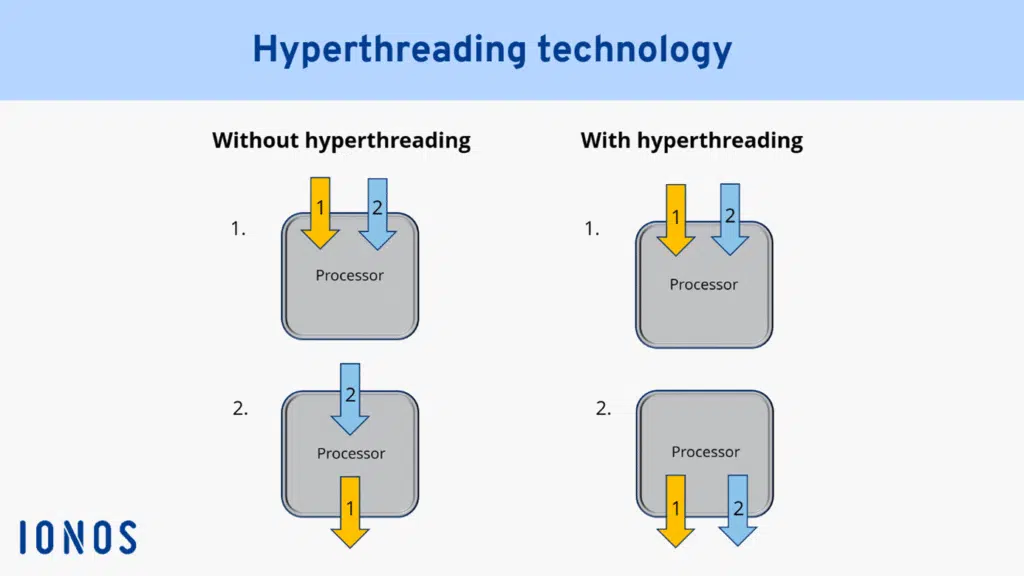
The table below summarizes the key differences:
| Feature | Hyper-Threading | Multi-Core Processing |
|---|---|---|
| Nature | Creates two logical cores from one physical core. | Integrates multiple, independent physical cores onto a single chip. |
| Resource Model | Logical cores share execution resources of the physical core. | Each physical core has its own dedicated resources. |
| Primary Goal | Increase efficiency by reducing core idle time. | Increase parallel processing power by adding more execution units. |
| Performance Impact | Improves throughput for concurrent, lighter tasks. | Provides true parallel execution for heavily threaded workloads. |
For a deeper dive into how multiple cores work together, you can read our guide on multi-core processing.
The CPU Hyper-Threading in the Modern CPU Landscape
Intel first introduced hyper-threading in 2002 with its Xeon and Pentium 4 processors. For years, it was a key differentiator between their Core i5 (typically without HT) and Core i7 (with HT) families. AMD adopted simultaneous multithreading (SMT) with its Ryzen processors starting in 2017, making the technology widespread across both major CPU brands.
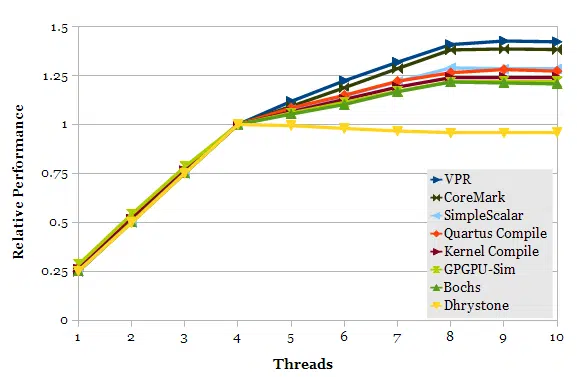
However, the landscape is evolving. With the move to hybrid processor architectures (like Intel’s 12th Gen and newer CPUs, which mix Performance-cores and Efficient-cores), Intel has begun phasing out hyper-threading on its Performance-cores. The company has decided that in this new design, adding more Efficient-cores provides a better balance of performance and power efficiency than hyper-threading. Despite this shift, hyper-threading/SMT remains a vital and active technology in most mainstream AMD and Intel CPUs.
Is Hyper-Threading Right for You?
Hyper-threading is a clever technology that improves CPU efficiency by allowing better utilization of each physical core’s resources. It offers tangible benefits for multitasking and multithreaded applications, potentially boosting performance by up to 30%.
However, its value is not universal. If your primary uses are web browsing, word processing, or playing older games, you may not notice a significant difference. The technology is most beneficial for professionals in content creation, software development, and scientific computing, or for power users who demand maximum multitasking performance.
When choosing a CPU, prioritize physical core count first, as these provide the most consistent performance uplift. View hyper-threading or SMT as a valuable feature that enhances an already capable processor, not as a substitute for physical cores. For recommendations on which processors best handle heavy multitasking, see our article on recommended processors for multitasking.
Further Reading: To learn more about how CPUs work and how to interpret performance metrics, check out our comprehensive CPU performance guides.
